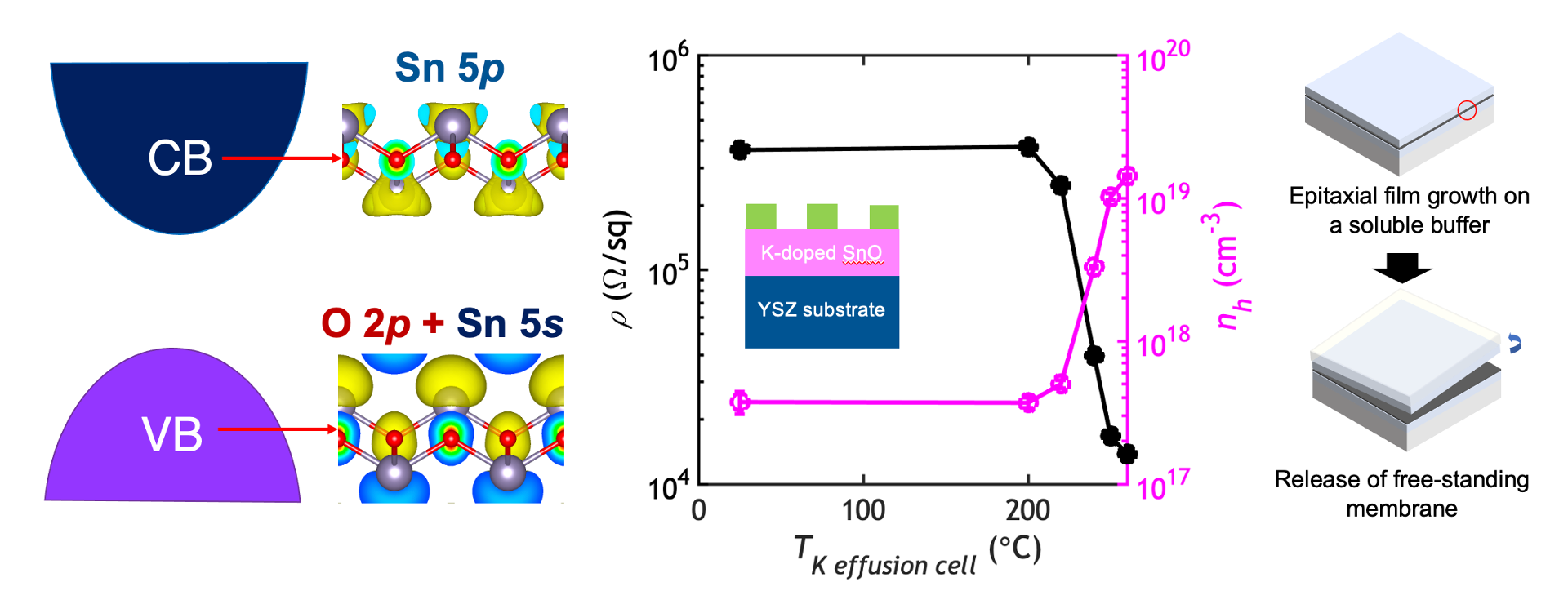Research Projects
Our group creates and applies integrated theoretical and experimental materials-design approaches to realize novel electronic materials for target technologies: (1) we computationally design new materials for target applications with first-principles calculations and materials informatics, (2) we then apply epitaxial growth techniques to experimentally synthesize prospective materials in thin-film type with targeted properties, and (3) we fabricate proof-of-concept devices based on new materials and demonstrate state-of-the-art performance.
The targeted application of my research is microelectronics for high performance computing, high-density memory and storage, and energy-efficient power control and conversion. In microelectronic technology, the performance of devices is ultimately determined by the physical properties of the component materials. To keep up with the today’s needs for artificial intelligence, big data, and autonomous vehicles, there is an urgent need for developing advanced semiconductor, dielectric, magnetic, and memory materials that are energy efficient at high power and high frequency. We focus on oxide materials which exhibit a variety of exotic functional properties not observed in traditional Si-based semiconductor materials.

Ultra-wide-band-gap semiconductors for power electronics
Ultra-wide-band-gap (UWBG) semiconductors have tremendous potential for RF and high-power electronics as the wider band gap allows for higher breakdown voltage that enables high-power and fast switching with lower energy loss. However, a wider band gap generally leads to doping inefficiency and carrier localization, which inhibits semiconductor applications. The focus of our research is to discover new UWBG semiconductors that are unexplored but have superior material properties to surpass the state of the art. To do this, we use first principles defect calculation based on hybrid density functional theory to uncover novel UWBG semiconductors with efficient doping properties. We then experimentally realize prospective materials by growing single-crystalline thin films using epitaxial growth techniques and characterizing the structural and electronic properties of films. We also explore various dopants and the interplay between charged defects to enhance doping efficiency while pushing to the limit to semiconductor band gap.

Entropy-stabilized oxide memristors for neuromorphic computers
A memristor is an emerging device that can drastically advance computing performance. It co-locates compute-and-memory capability and adopts a new computing paradigm as an alternative to conventional von-Neumann architecture-based computers. Despite this powerful strength, its applicability has been severely restricted by the stochasticity and limited tunability of amorphous switching mediums. As an alternative, we study memristors based on entropy-stabilized oxides (ESO). ESOs are single phase composed of more than 5 different cations, thus, memristors based on single crystalline ESOs show robust switching dynamics that can be precisely controlled by the composition of constituent cations. We design optimal composition of ESO for target switching properties, fabricate and measure single-crystalline memristors, and collaborate with software engineers to implement networks with the devices.

Back-end-of-line compatible semiconductors for heterogeneous integration
Back-end-of-line (BEOL) compatible complementary transistors can boost chip performance beyond Moore’s law by breaking through the scaling barrier of conventional CMOS design and providing a new integration approach, i.e., monolithic 3D integration. Such 3D integration can also stack logic and memory together to boost data-intensive computing such as in-memory computing. This technology is enabled by low-temperature synthesis of channel semiconductors under the constraint of limited thermal budget (<400 C). Our objective is to develop novel oxide semiconductors with low process temperature, wide-band-gap, and high mobility. Our particular focus is developing high-mobility p-type oxides which has been the primary challenge of this power-saving technology. We use orbital hybridization approach to develop novel p-type oxides and use various film integration techniques to fabricate back-end-of-line compatible devices.